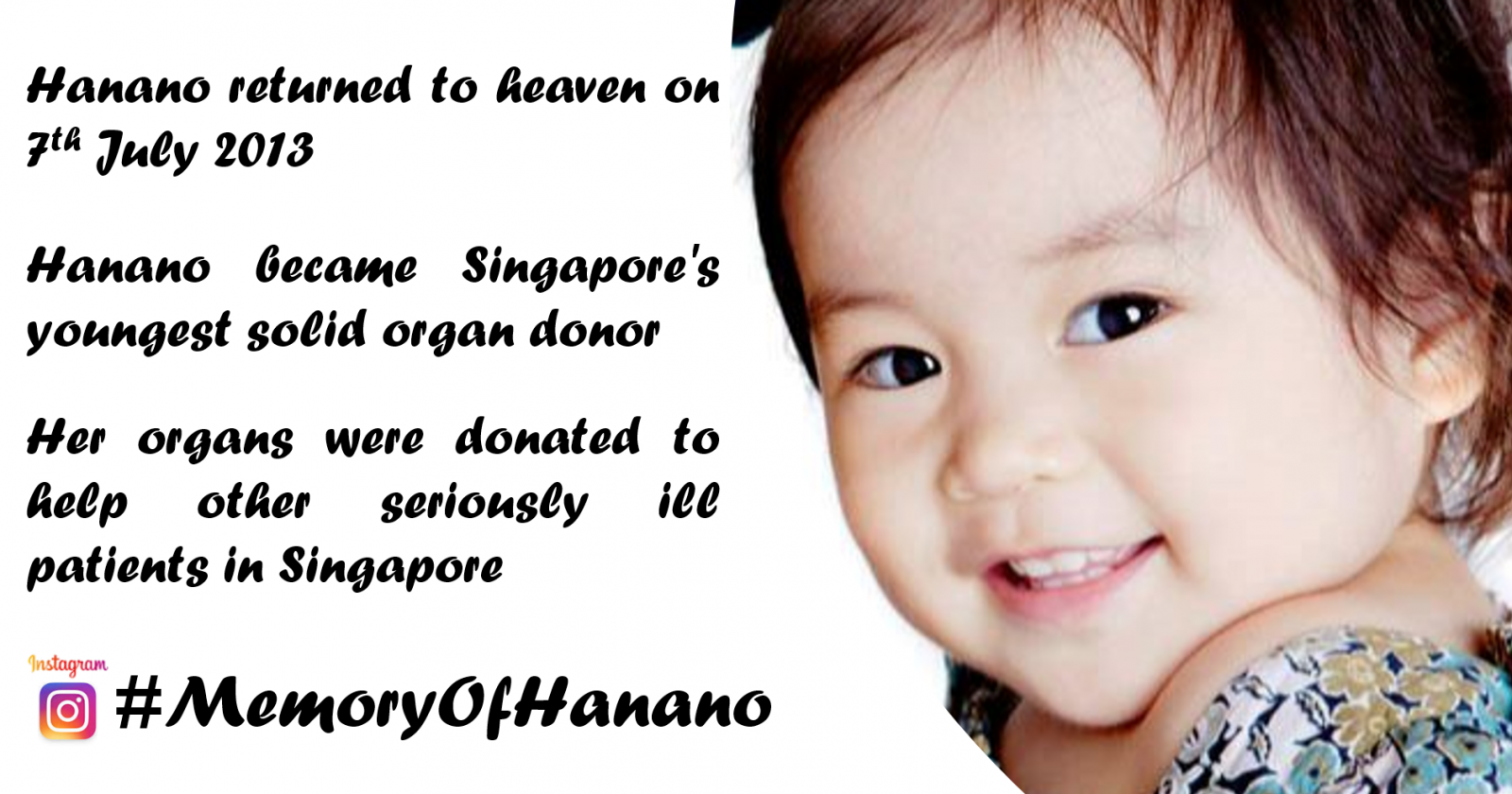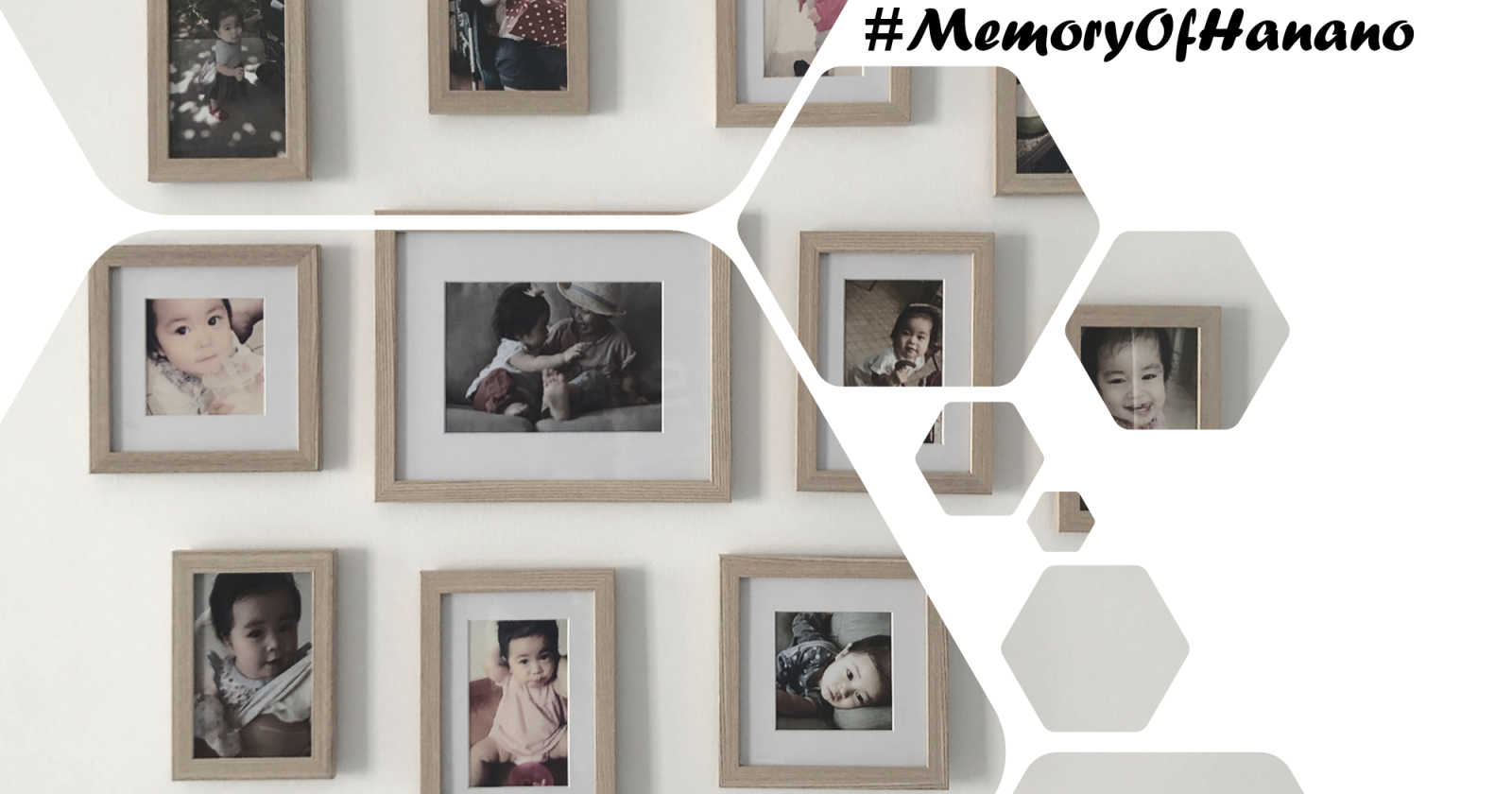News
2019 Cloud Funding
Until end of August, MemoryOfHanano is running a cloud fundraising in Australia, Singapore and Japan.
It would mean the world to me if you could either donate or share my cause to spread the word.
About Us
Purpose
MemoryofHanano is a charitable act run by Hanano's family, friends and supporters in Singapore, Japan, and Australia. It lives in the memory of Hanano Oyama whose young life was cut short. She became Singapore's youngest solid organ donor in 2013, and her organs were donated to help other seriously ill patients in Singapore.
This charitable act aims to:
- Raise awareness of organ donation and transplantation through sharing the story of Hanano
- Provide tools, tips, and resources to help you spread awareness
- Increase the rate of registered organ donors (e.g. more Australians to join the Australian Organ Donor Register online, etc...)
- Host a local event to raise money on behalf of various transplant organisations in Singapore, Japan, and Australia. The funds will be used to support:
- transplant patients who are facing financial difficulties
- transplantation research
- public education campaigns for organ/tissue donation and transplantation
Why increasing the awareness of Organ Donation is important?
According to the Australian Government - Organ and Tissue Authority, registration of donation decisions have a direct influence on our donation rates. Nine in ten families agree to donation proceeding when the deceased is a registered organ donor. This drops to just five in ten families when the deceased is not registered, and the family has no prior knowledge of their loved one’s wishes. This is one of the reasons why registration is essential.
Some more facts and statistics (Australia)
- Around 1,400 Australians are currently waitlisted for a life-saving organ transplant.
- In 2018, 554 deceased and 238 living organ donors and their families gave 1,782 Australians a new chance at life.
- While 81% of Australians believe that registration is important, only 34% of those aged 16 years+ have joined the Donor Register (Only one in three Australians have joined the Australian Organ Donor Register).
For more information about organ and tissue donation, please refer to the Australian Government - Organ and Tissue Authority
If you look at relevant facts and statistics in Japan, the rate of donation is a fraction of what it is in Australia.
Some facts and statistics (Japan)
- Around 13,471 Japanese are currently waitlisted for a life-saving organ transplant.
- In 2018, 97 people and their families gave organ recipients a new chance at life.
For more information about organ and tissue donation, please refer to the Japan Organ Transplant Network homepage (Japanese only).
Hanano's Story
In life, she was a charming toddler with an independent streak
My name is Nori, father of Hanano Oyama. My family has been through a tragedy I would wish on no other. It is hard to put pen to paper when talking about your own 18-month old baby girl going to heaven after drowning in a swimming pool. But that is what happened to us in 2013. Hanano meant the world to us and we still miss her very much. Please let me share the story of my daughter Hanano Oyama.
On 19th December 2011, we welcomed our first daughter, Hanano. She was born healthy at 2855 grams.
She was a well behaved but a cheeky girl. She loved to pretend cooking, dancing and playing with her brother Kai. She loved eating strawberries. She loved fashion. Whenever her mother, Kana asked “Hannah, should we go for shopping?” Like any other girl, she’d say “yes”, but then needed time to put on her girls toy jewellery, wear her mum’s high heels and bring her toy baby stroller with her favourite bunny doll inside. She kissed me every morning when I was leaving home. She was very charming and adorable.
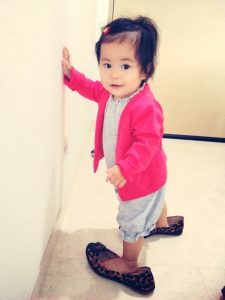
Hanano wearing her mum’s shoes to be ready to go shopping

Hanano eating her favorite fruits strawberry
The day our lives tragically changed, forever.
Our life had changed entirely on 29 June 2013 when Hanano drowned in the swimming pool. On that day, we had a casual catch-up with our friends near the swimming pool.
I only realised something was wrong when I heard a cluster of voices, including my wife, Kana’s screaming voice. I turned around, and saw a small body lying on the side of the pool. I just ran and ran. As I got closer, I could see it was Hannah, and she was unconscious. The rest is all a bit of a blur. I tried, but I didn’t know how to do CPR… my friends were calling an ambulance. I sat there in shock, holding her body and calling her name again and again, I was screaming for people. I tried to convince myself “it’s alright, she is fine”…
I will never forget about that moment. Me doing CPR. It still randomly pops into my head like a movie scene… what if I had been proficient in First Aid/CPR… I could have saved her life…

Hannah's big smile when playing with her brother

Hannah's cute cheeky smile
After a while, the ambulance service arrived, and we all tried to resuscitate Hanano. When we finally made it to Singapore General Hospital, we were lead to a quiet room. Despite several resuscitation attempts, Hannah didn’t recover, and we were told to be prepared for the worst case situation. We both collapsed on the floor. We didn’t know what to do. We have asked if we could get closer to Hannah, and the hospital allowed us to go in. We were lead to the Intensive Care Unit (ICU). We didn’t know what to do again, so we called my wife, Kana’s mother and asked her to pray together.
I don’t remember for how long, but after a while, the miracle happened… Paramedics finally got a heartbeat. Hannah’s tiny heart started moving again.
The beginning of the longest one week we have ever experienced in our life
Hanano was transferred to KK Women’s and Children’s Hospital overnight.
For the first few days, we were told that there was a high chance that she would have a severe brain injury. Doctors suggested we initiate body cooling to determine if it improves brain function. Her facial colour returned to normal, so to us, she was recovering okay. She wasn’t moving at all, so we were massaging her body to make sure that she didn’t have pain around her neck, shoulder and back when she woke up. A few times a day doctors visited her to check if her pupils were responding to light, but the outcome was not positive.
Around 3-5 day, I met transplant coordinators. Their job is to meet and counsel for the family members of potential organ donors and coordinate the donation. One of the toughest jobs I can imagine. I appreciated the fact that they only visited me while Kana was away as she wasn’t ready to meet the coordinators. I have asked them to come to the hospital at a very odd time (e.g. midnight or very early in the morning) so that they did not come across Kana. They never said “No” to my request.
I was asked whether I would consider donating Hannah’s organs. I always responded “YES” as long as we follow the correct procedures. But how could I possibly explain this to Kana… I didn’t know how she would react if she found out that I was considering donation because that means it’s over. I remember I was always asking myself, is there something else I can do before considering a donation? I don’t know when exactly it was, but around this time, I met a neurologist. He shared the result of the brain CT scan with me and explained that Hannah was irreversibly brain dead. By this time, it was almost clear to me that we must donate her organs. I thought there must be a reason why Hannah’s tiny heart moved again.
We sought 2nd and 3rd opinions and shared the CT scan results with other doctors, one of whom was our relative, and he was a brain surgeon. Doctors from KK hospital were very supportive of me seeking other opinions. The opinions were the same that it was an irreversible loss of function of the whole brain.
The last day, 7-July-2013, Hanano returned to Heaven
July 7, the last day. I was lead into a room where the doctors would undertake the final brain death test. I was asked to test all brain death criteria (e.g. determining whether Hannah reacted to light, inserting ice-cold water into each ear to see if there was any reaction in her eyes etc…). There were 4-5 people including nurses and doctors with me… It was so hard to go through this… and first time, I cried in front of them, I just could stop my tears from falling… I felt so sorry for Hanna… I went through the entire process by myself as this was absolutely needed to ensure there were no mistakes in the process.
11:30 am. I signed the form, and she was declared brain dead.
The hospital arranged a bigger private room for us to have our last family time. Our final wish was to cuddle her, but we couldn’t because she had lots of tubes and medical devices around her. I remember it was late night when her operation to remove her organs started. Hannah was taken into the operation room. We followed her in and we said our final good-bye.
Hannah was truly an angel for us. We miss her every minute of our life. In the grief and disbelief of losing Hannah, we had a lot of support and love from lots of people. Without this, we couldn’t have gone through those process. Also, we were so impressed by the knowledge and love of the fantastic nurses, doctors at both Singapore General Hospital and KK Women’s and Children’s hospital. Lastly, we are grateful for the support we received from the transplant coordinator and other staff from SingHealth.
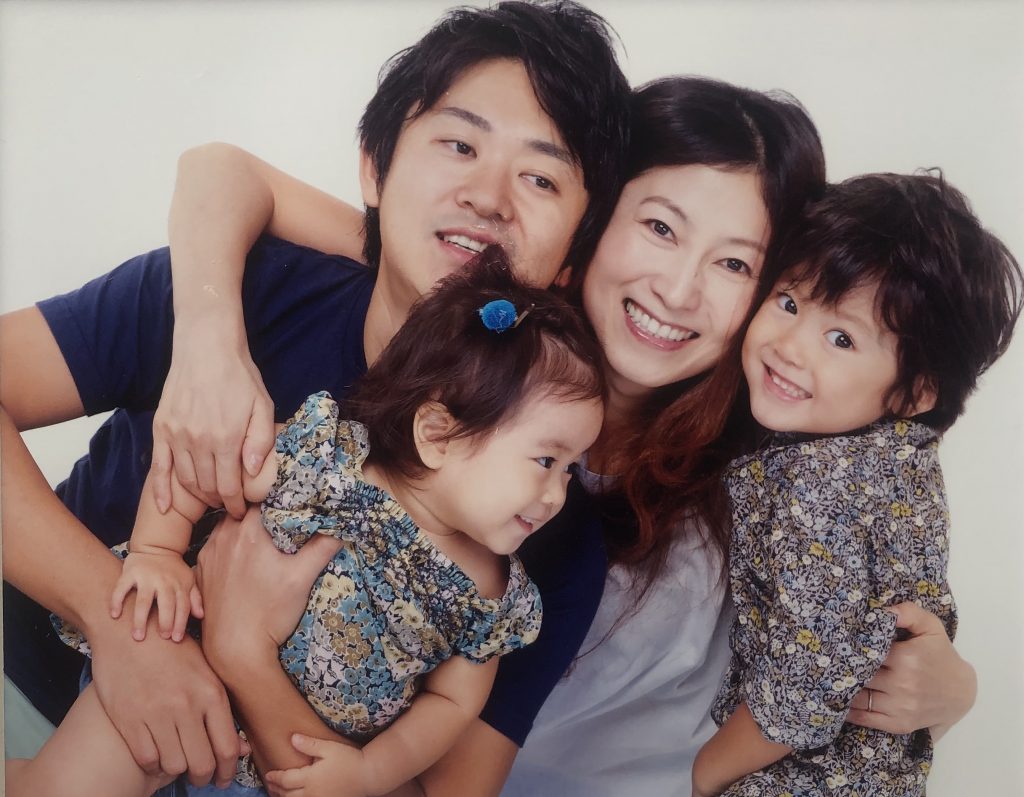
May 2013 - The last family photo with Hannah
Origami Tsuru (Paper Crane) Fundraising Event
What is this event?
ORIGAMI TSURU (PAPER CRANE) FUNDRAISING EVENT is a local fundraising event run by the team of the “Memory-Of-Hanano” and their supporters. It is in July every year, the month Hanano returned to Heaven to raise awareness for organ and tissue donation in Singapore, Japan and Australia. Money raised during this event will be donated to transplant organisations in Singapore, Japan and Australia through appropriate channels (e.g. cloud funding etc…).
Funds to be used for *1:
- Providing financial assistance to transplant recipients
- Supporting educational and research activities of organ/tissue donation and transplantation
- Organising campaigns for organ/tissue donation and transplantation
*1: Usage of the funds varies per organisation. Details are available in the relevant cloud funding page.

Paper Crane - Photo by TokyoViews (Flickr)
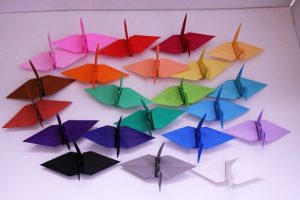
Paper Crane - Photo by eridanus (Flickr)
Your wishes help fund raise
The Origami Zuru or paper crane, pictured above is a representation of the Japanese red-crowned crane. It is one of the most basic Origami shapes that children learn at school. A thousand paper cranes strung together is called senbazuru – [senba] meaning thousands and [zuru] is a crane, which is said to grant wishes. One of the most popular reasons for people folding 1,000 paper cranes is to wish your friends or loved one to recover from any severe illness.
As you can imagine, folding 1,000 paper cranes is not easy so it is common for groups of people to join together to make a senbazuru. As this activity brings people together, the act of making a senbazuru has been adapted on a larger scale to spread public awareness often for good causes or charitable fundraising campaigns all over the world.
The team of the Memory-Of-Hanano would like to adopt a similar concept. Our event will be held in schools, offices or public spaces. We will start our event by providing a brief overview of organ donation. We will then ask everyone to join us folding a paper crane together. End of the event, we will ask everyone to make a gold coin donation. Paper cranes will be strung together and sent to hospitals, to wish for the recovery of patients. In addition to this we will widely spread the story of Hanano via relevant social media to raise funds and awareness of organ donation and transplantation.

Paper Crane - Photo by Hollipops (Flickr)
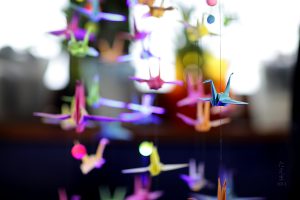
Paper Crane - Photo by Taema (Flickr)
Media
Japanese Media
- 1歳半で脳死移植 朝日2013年07月12日(PDF)
- 華乃ちゃんを忘れない シンガポールで臓器提供した女児しのぶ行事 脳死移植への理解呼び掛け 産経2014年9月9日(オンライン)
Singapore Media
- Toddler becomes Singapore’s youngest solid organ donor The StraitTimes 9th July 2013 (Online)
- SHE’s SINGAPORE’S YOUNGEST ORGAN DONOR The StraitsTimes 9th July 2013 (PDF)
- Toddler becomes Singapore’s youngest solid organ donor ShinMinDailyNews 9th July 2013 (PDF)
The Straits Times RAZOR TV
Links / References
Share Your Stories With Us
We love hearing stories. Send us your stories, photos, and videos directly to memoryofhanano@gmail.com, or post them to your social media using the #memoryofhanano hashtag.
